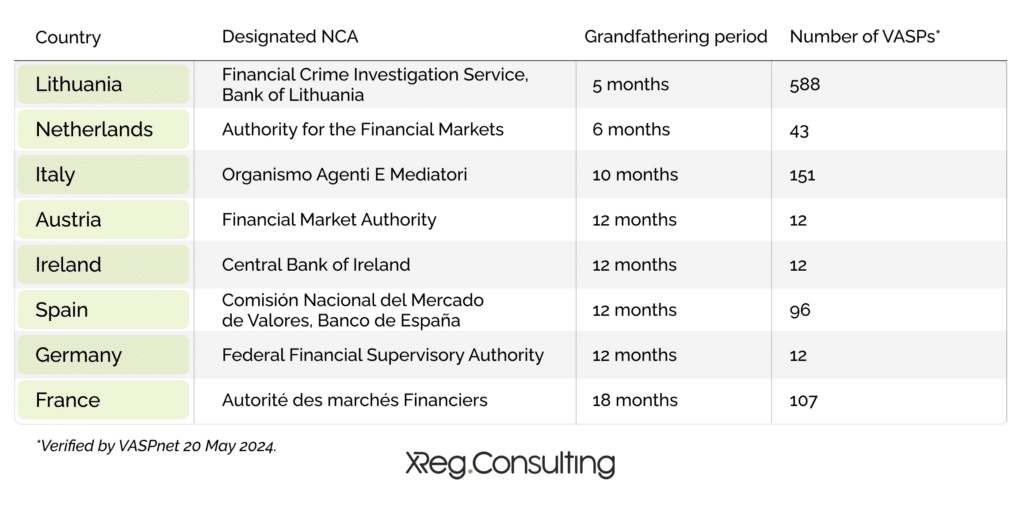Opinion
Bitcoin Season Two Proposals Facing Early Headwinds
Published
4 days agoon
By
admin

If you haven’t been around too long, it’s hard to fully appreciate how quickly narratives can shift in this industry, especially when playing catch-up. Fads grow old, memes become tired. It’s fair to say that this year’s seasonal craze is currently feeling the pressure of Bitcoin’s fading momentum.
While it could be easy to write it off as a temporary setback caused by the usual bull market correction, strong underlying currents are working against popular scaling narratives. As this tide is going out, it’s become a little hard to ignore those out there swimming naked.
Is the airdrop meta over?
If it wasn’t clear already, the recent crop of projects proposing to “build on Bitcoin” has so far been more about opportunism than innovation. Yes, BitVM and ordinals sparked genuine interest and creativity but the follow-through leaves a lot to be desired. This has been caused, in large part, by lazy operators. In lieu of doing actual engineering work, every other third-rate entrepreneur in the industry simply took the Ethereum playbook and ran with it on Bitcoin.
I made a case in my last article for why this modular cottage industry has left Ethereum worse for wear from a scaling standpoint but recent developments have highlighted just how misaligned the economic incentives are.
Of course, the impediment to this infrastructure arms race has been the ability of its promoters to print tokens like it’s going out of style. Unfortunately for them, it does look like the trend is beginning to buckle on those schemes. You might remember how everyone eventually pivoted away from ICOs after Dentacoin raised billions of dollars. Something similar is playing out as we speak.
Just a couple of months ago, I explained how the notion of points had conquered the token airdrop meta. Alternative execution layers were popping out left and right, advertising the opportunity to collect eventual rewards in exchange for liquidity on their networks. The premise was simple enough: users would be incentivized to use applications on a given rollup or contribute assets to its trading pools. Once the chain would launch, tokens would be allocated to a semi-random set of qualified participants. The idea was that this would further align them with the protocol and its future.
It turns out the exact opposite is playing out. Over the last week, a couple of heavily anticipated token airdrops shined light on the absurdity of the method.
How do you verify the identity of a user in a pseudonymous system? You can’t. The inability to do so creates an opportunity for any capable actor to impersonate any number of users. Unsurprisingly, well-capitalized actors quickly caught on to the trick and have been very busy exploiting it to their benefit. Instead of users, airdrops have attracted mercenaries who are pillaging every new layer they can get their wallets on.
You might be wondering why I’m writing about tokens in a Bitcoin article. Consider it only a reminder that any Bitcoin scaling proposal or layer that involves a token should be avoided at all costs. Putting aside the fraudulent nature of the assets, this playbook is a telltale sign of projects that are behind the curve, even by Ethereum standards. I don’t care what technology they claim to work on nor should you care about their execution environment or zero-knowledge proof. The window is closing in on them and we can expect them to shortchange their “users” at every turn to profit from whatever liquidity this racket has left. Stay away.
Ethereum’s identity crisis
The Bitcoinlayers platform reported yesterday that more than half of current scaling proposals for Bitcoin were planning on using Ethereum’s EVM as a technology platform. I do not know what to make of this number. It’s probably generous to associate any of those with Bitcoin but the market is clearly interested in exploring this idea.
This is especially telling considering the volatile state of Ethereum at the moment. Don’t call it a civil war yet but some battle lines are being drawn and the outcome will be telling for its rollup-centric roadmap. I previously laid out the case for Ethereum’s network fragmentation. Suffice it to say that things are escalating quickly and the project is again facing serious debates and introspection.
On one hand, a cohort of developers are advocating for the enshrinement of rollup operations into the protocol to consolidate economic activity and improve user experience. Another group is raising questions about the initiative claiming it would further centralize MEV extraction and affect censorship resistance. It’s increasingly looking like Vitalik might need to pull another rabbit out of his hat.
Combined with fatigue over the commoditization of EVM execution environments, the previously celebrated modular thesis is starting to look rather tenuous. At the very least, the original playbook does not seem to hold anymore and the narratives are shifting again.
The timing of this could be better for emerging Bitcoin layers who are starting to look pretty outdated by industry standards — and they haven’t launched yet!
Memetic exhaustion
You would never catch me being bearish on memes but they do move in cycles and the latest iteration has lost some of its luster. While I’m not ready to call the top of this new meme paradigm, it’s another example of new Bitcoin layers being late to the show. Without dog and cat tokens, what market exists for all the infrastructure being built?
The ground is shifting beneath the feet of a new generation of Bitcoin builders. I suspect those who decided to take the longer road of putting in actual work will have a better shot at making it to the other end of this bull market. Doing so will require learning valuable lessons from the experiments playing out on the other sides of the pond. It would appear patience is warranted given the quickly evolving state of affairs.
Source link
You may like


Top cryptocurrencies to watch this week: MOG, KAS, FET


CurveDAO (CRV) Nears All-Time Low Following Whale Deposit to Binance: On-Chain Data


Japanese Tech Giant Sony Enters Crypto Exchange Business With This Acquisition


Bitcoin ATM installations reach 38k, below the all-time high


Mark Cuban and ChatGPT Predicts Best Pick


This Week in Crypto Games: Dr. Disrespect Dumped, Pixelverse and Catizen Tokens, Notcoin ‘Fresh Start’
blockchain-based business
Cryptocurrency after the European Union’s MiCA regulation
Published
11 hours agoon
June 30, 2024By
admin
Disclosure: The views and opinions expressed here belong solely to the author and do not represent the views and opinions of crypto.news’ editorial.
The Markets in Crypto-Assets Regulation (MiCA) marks a significant milestone in the European Union’s journey toward regulating the rapidly evolving crypto market. Its timeline and provisions hold immense importance for both crypto businesses and investors. As we approach crucial dates, starting with the application of stablecoin provisions from June 30, 2024, and the complete application of MiCA on December 30, 2024, the crypto landscape is undergoing a transformative phase.
Over the next two years
MiCA’s staggered timelines and transitional periods, extending up to June 30, 2026, imply a period of fragmented implementation across the EU and European Economic Area (EEA). Jurisdictions such as Ireland (12 VASPs), Spain (96 VASPs), and Germany (12 VASPs) will grant a 12-month transitional period. In contrast, other jurisdictions will offer more extended periods, such as France (107 VASPs) with 18 months, while Lithuania (588 VASPs) will likely only grant five months. This transitional phase will prompt market consolidation as not all existing service providers will secure MiCA licenses. Many will look to capitalize on this interim period before winding down operations.
The race among EU/EEA jurisdictions to become the primary hub for crypto activities intensifies, with jurisdictions like France, Malta, and Ireland competing to take the top spot. However, regulator readiness and compliance for crypto-asset businesses pose significant challenges. Regulators are facing an adjustment period to upskill their staff to process MiCA applications, particularly in jurisdictions with high applicant volumes. The complexity of various business models, encompassing numerous products unfamiliar to regulators, exacerbates this challenge. The general lack of expertise to authorize and supervise this sector requires substantial training efforts.

Challenges for crypto businesses
MiCA, coupled with the vast array of related Level-2 measures (many of which still need to be finalized) and other applicable EU instruments such as the anti-money laundering laws, the Digital Operational Resilience Act (DORA), and the Electronic Money Directive (EMD), create a complex regulatory framework. Understanding what provisions apply to each entity type and what documentation needs to be implemented will be challenging for some.
The delisting of crypto-assets, particularly stablecoins, from EU exchanges due to their issuers’ failure to obtain their licenses on time will pose considerable hurdles and limit the availability of certain assets for consumers.
Adapting to MiCA will strain many entities and require substantial investments in technological infrastructure. The Travel Rule, a requirement in which information must be shared between VASPs with each crypto transaction, also comes into effect at the same time as MiCA. The Travel Rule mandates that CASPs transfer a substantial amount of information about the originator. This includes their address, personal identification number, and customer identification number. In rare cases, it may even require the disclosure of the originator’s date and place of birth. This adds another layer of complexity, further highlighting the need for harmonization within the EU and solutions to comply with the Travel Rule that are interoperable and enable secure data sharing while preserving user privacy.
Key crypto market outcomes
Despite the challenges, MiCA instils confidence in EU entities due to heightened regulatory oversight, the promotion of investor protection and attracting mainstream institutional participation. Enhanced consumer protection measures mitigate risks such as fraud and hacking, fostering trust among retail clients.
MiCA’s reporting requirements will result in regulators across the EU possessing more data, empowering them to monitor market activities effectively. The ability to freely passport activities across the EU will facilitate cross-border operations and reduce regulatory fragmentation while expanding market reach.
MiCA’s prescriptive nature and all-encompassing regime set a precedent for global regulatory frameworks. Other jurisdictions are already observing and may replicate some of MiCA’s provisions and its approach, contributing to regulatory harmonization on a worldwide scale. However, concerns remain as to whether it will stifle growth and innovation and whether businesses will look to relocate to more permissive and less restrictive jurisdictions.
Steps after MiCA
MiCA’s gaps in regulating emerging areas like true defi (the provision of financial services or issuance of financial assets without identifiable intermediaries and with no single point of failure), lending, and NFTs necessitate ongoing policy discussions and further regulatory measures. Reports on these aspects will inform future regulatory developments, potentially leading to a second iteration of MiCA in at least the next four to five years or supplementary measures.
MiCA signals a new era of regulation in the crypto market, aiming to balance innovation with investor protection and market integrity. While challenges persist, MiCA lays the groundwork for a more transparent, secure, and inclusive crypto framework in the EU and beyond. As the crypto landscape continues to evolve, regulatory regimes must adapt to emerging trends and technologies, ensuring sustainable growth and fostering investor confidence.

Ernest Lima
Ernest Lima is one of the founding Partners at XReg Consulting and a qualified lawyer with over 17 years of experience working in financial services regulation. As XReg’s legal and regulatory policy lead, he is highly experienced in the design, development, and implementation of crypto legislative frameworks that meet both global and local policy objectives. At XReg, Ernest leverages in-house expertise on Europe’s Markets in Crypto-Assets (MiCA) Regulation to advise European clients or those looking to enter the European market. He also leads engagement with European public sector officials and National Competent Authorities in their transition to MiCA compliance. Ernest has also spoken at industry conferences and trained international regulatory authorities on Europe’s MiCA regulation and how it will shape the future of crypto’s international regulatory landscape. He also sits on the Financial Markets Law Committee to address issues arising from using cryptoassets and DLT.
Source link
Crypto Derivatives
Who is afraid of crypto derivatives?
Published
23 hours agoon
June 30, 2024By
admin

Disclosure: The views and opinions expressed here belong solely to the author and do not represent the views and opinions of crypto.news’ editorial.
Stock trading and investment are never meant for the faint of heart, but one can certainly ease into them without losing their head and hard-earned money.
Blue-chip fiat investing is established, is typically easy to understand, and has many avenues where traders can ask for help. It might be slightly boring and slow to grow if only investing in reliable, “sure thing” stocks, but they’re still relatively approachable.
Derivatives
Derivatives such as futures or options ramp up the intensity, as the investments become more speculative and complex—even more so than just looking at numbers on the screen.
The earning potential here is incredibly vast, but so is the potential for loss. This is why derivatives are usually left to institutional investors or experienced traders who have a better grasp of how to navigate these sectors and, to say it plainly, are better equipped to lose their investment.
Now, imagine throwing crypto into the mix here.
Crypto derivatives are not a new concept, and many leading exchanges and platforms have launched services for experienced traders to try their hand at it. However, entering a speculative market dealing with notoriously volatile assets is not so easy. And just because someone has found success in futures and options trading in fiat doesn’t mean the same fortune will befall them in crypto.
Simply put, crypto derivatives are frightening to the average trader. But is there any way to make it less intimidating?
Fiat investment services have only become more accessible with the rise of mobile-first products that use simple and understandable language to guide newcomers. Any sensible financial advisor at a retail bank will also likely advise clients to store funds in an investment account rather than a traditional savings account, solidifying legitimacy that gives people a sense of security.
Plenty of blockchain-based services attempt the same thing, but the success has been middling.
Any way you slice it, crypto will always have a more daunting learning curve than fiat currencies due to how the technology and market function. And in most cases, someone interested in crypto can’t simply walk into a bank and get sound advice on derivatives trading strategies.
Making crypto derivatives more approachable requires a clear push in both education and creating services that don’t require a doctorate to operate.
Projects such as Thalex, for instance, have made this their mandate. Thalex is an exchange specializing in crypto derivatives, namely in perpetuals, futures, and options, but its no-frills approach serves its mission to remove the friction from trade ideation to execution and to empower traders by offering tools that help even out the playing field.
Likewise, Thalex offers a “paper trading” platform. This enables those interested in its platform to test out its services and try out trades before going live—creating an environment where users can learn the ropes on crypto derivatives.
Futures and options aren’t an impossible concept to grasp, but the unpredictability and lack of education on how they work in crypto make investors less inclined to explore them. To overcome this fear of crypto derivatives from fiat and crypto traders alike, there has to be a way to soften the landing. Not only will this help make the pros and cons of derivatives trading clearer, but also help create a roadmap that traders can feasibly follow.
Source link
Chevon Doctrine
Supreme Court Decision Overturns Chevron: A Victory for Judicial Authority and Bitcoin
Published
3 days agoon
June 28, 2024By
admin

In a landmark decision on June 28, 2024, the Supreme Court of the United States, by a 6-3 vote, overruled the longstanding Chevron doctrine, fundamentally reshaping the landscape of administrative law and judicial review. The case, Loper Bright Enterprises v. Raimondo, signals a significant shift in the balance of power between the judiciary and administrative agencies. This decision not only reinforces judicial independence but also presents substantial benefits for the Bitcoin industry, echoing the implications of last year’s West Virginia v. EPA decision.
The Case
The Chevron doctrine, established in Chevron U.S.A., Inc. v. Natural Resources Defense Council, Inc., 467 U.S. 837 (1984), required courts to defer to agency interpretations of ambiguous statutes as long as the interpretation was deemed reasonable. This two-step framework had become a cornerstone of administrative law, often tipping the scales in favor of agency authority over judicial oversight.
In Loper Bright, the petitioners challenged a National Marine Fisheries Service (NMFS) rule that required Atlantic herring fishermen to bear the cost of onboard observers, arguing that the Magnuson-Stevens Act (MSA) did not authorize such a mandate. The lower courts had upheld the NMFS rule, applying Chevron deference to conclude that the agency’s interpretation was permissible.
The Supreme Court’s Ruling
Chief Justice Roberts, writing for the majority, delivered a decisive opinion that dismantles Chevron deference. The Court held that the Administrative Procedure Act (APA) requires courts to exercise independent judgment when interpreting statutes, rejecting the notion that ambiguities in law should default to agency interpretations.
“Chevron defies the command of the APA that ‘the reviewing court’—not the agency whose action it reviews—is to ‘decide all relevant questions of law’ and ‘interpret . . . statutory provisions,’” Roberts wrote. “It requires a court to ignore, not follow, ‘the reading the court would have reached’ had it exercised its independent judgment. … Chevron cannot be reconciled with the APA… .” Slip Op., at 21 (emphasis added).
The ruling emphasizes that statutory ambiguities do not automatically delegate interpretive authority to agencies. Instead, courts must use traditional tools of statutory construction to determine the best reading of a statute, ensuring that agencies do not exceed their conferred powers.
Impact on Bitcoin and Bitcoin Mining
The implications of this ruling extend far beyond administrative law, reaching into the heart of the Bitcoin mining industry. Much like the Supreme Court’s decision in West Virginia v. EPA, which curbed the Environmental Protection Agency’s overreach, this ruling reinforces the need for clear congressional authorization before agencies can impose significant regulatory burdens.
For the Bitcoin mining industry, this decision is a clear win. Regulatory uncertainty has long been a thorn in the side of Bitcoin miners, who rely on predictable and stable access to power and other resources. By curbing the ability of agencies to unilaterally expand their regulatory reach, the Court has created a more favorable environment for Bitcoin mining operations.
Bitcoin miners have often been at the mercy of shifting regulatory landscapes, which can dramatically impact their operations. For instance, stringent environmental regulations targeting power consumption could have severely constrained the industry. With the Chevron doctrine overturned, any future regulatory attempts to impose such burdens will require explicit and unambiguous congressional authorization, followed by detailed judicial scrutiny.
This decision also invigorates the major question doctrine, which posits that significant regulatory actions with vast economic and political implications require clear congressional authorization. This doctrine can be a powerful tool for Bitcoin miners and other industries to challenge regulatory overreach, ensuring that agencies cannot impose wide-ranging policies without clear legislative backing.
Furthermore, recent developments have seen the Biden Administration intensify oversight on the U.S. Bitcoin mining sector through an Energy Information Agency (EIA) emergency survey, portraying electricity usage by miners as a significant threat to national grid stability. This move demanded detailed disclosures from miners, and mirrored actions in countries like Venezuela, signaling a concerning trend towards building a full registry of mining activities. The industry’s response united against such overreach, and resulted in a decisive victory against the Federal Government.
Insights from the NRA and Cantero Cases
The recent NRA and Cantero cases further illuminate the judicial shift towards protecting industry autonomy from regulatory overreach. In both cases, the courts have shown a willingness to scrutinize agency actions that appear to exceed their statutory authority. The NRA case, dealing with banking regulations, and the Cantero case, focusing on state versus federal regulatory powers, underscore the importance of clear legislative directives. These cases have set a precedent that benefits the Bitcoin mining industry by highlighting the judiciary’s role in curbing unwarranted regulatory expansion, akin to the protections now reinforced by the Supreme Court’s rejection of Chevron deference.
Final Thoughts
The Supreme Court’s decision to overturn Chevron represents a monumental shift towards judicial independence and a recalibration of the administrative state. For the Bitcoin industry, this ruling is particularly significant, promising a more predictable and less burdensome regulatory environment.
As industries and legal practitioners grapple with the implications of this ruling, one thing is clear: the era of agency deference has been significantly curtailed, marking a new chapter in the interpretation and application of federal laws. This ruling underscores the importance of clear legislative mandates and may prompt Congress to take a more active role in defining the scope of agency powers moving forward.
For Bitcoin miners, this decision is a beacon of hope, heralding a future where regulatory overreach can be more effectively challenged, fostering a more stable and supportive environment for the growth and sustainability of the industry. As the judiciary reclaims its role as the ultimate arbiter of the law, the Bitcoin mining community, and Americans as a whole, can now look forward to a more balanced and just regulatory landscape.
This is a guest post by Colin Crossman. Opinions expressed are entirely their own and do not necessarily reflect those of BTC Inc or Bitcoin Magazine.
Source link

Top cryptocurrencies to watch this week: MOG, KAS, FET

CurveDAO (CRV) Nears All-Time Low Following Whale Deposit to Binance: On-Chain Data

Japanese Tech Giant Sony Enters Crypto Exchange Business With This Acquisition

Bitcoin ATM installations reach 38k, below the all-time high

Mark Cuban and ChatGPT Predicts Best Pick

This Week in Crypto Games: Dr. Disrespect Dumped, Pixelverse and Catizen Tokens, Notcoin ‘Fresh Start’

June sales drop 47% but there are more buyers and sellers

Toncoin Whales Just Started Buying This Coin; Is $10 Next?

SEC Sues Consensys Over MetaMask Staking, Broker Allegations

Cryptocurrency after the European Union’s MiCA regulation

Charles Hoskinson Flags Major Ongoing AI Censorship Trend

Catch up on Render and BNB price spike; enhance wallets with top analyst pick
Bitcoin Remains Bullish As New BTC Addresses Surge To New 2-Month Highs

XRP Price May Soar Past $6, Here’s Why

Popcat up over 90%, as SHIB and DOGE see price declines

Bitcoin Dropped Below 2017 All-Time-High but Could Sellers be Getting Exhausted? – Blockchain News, Opinion, TV and Jobs

What does the Coinbase Premium Gap Tell us about Investor Activity? – Blockchain News, Opinion, TV and Jobs
BNM DAO Token Airdrop
A String of 200 ‘Sleeping Bitcoins’ From 2010 Worth $4.27 Million Moved on Friday

NFT Sector Keeps Developing – Number of Unique Ethereum NFT Traders Surged 276% in 2022 – Blockchain News, Opinion, TV and Jobs
New Minting Services

Block News Media Live Stream

SEC’s Chairman Gensler Takes Aggressive Stance on Tokens – Blockchain News, Opinion, TV and Jobs

Friends or Enemies? – Blockchain News, Opinion, TV and Jobs

Enjoy frictionless crypto purchases with Apple Pay and Google Pay | by Jim | @blockchain | Jun, 2022

Block News Media Live Stream

How Web3 can prevent Hollywood strikes

Block News Media Live Stream

XRP Explodes With 1,300% Surge In Trading Volume As crypto Exchanges Jump On Board

Block News Media Live Stream
Trending

 Altcoins2 years ago
Altcoins2 years agoBitcoin Dropped Below 2017 All-Time-High but Could Sellers be Getting Exhausted? – Blockchain News, Opinion, TV and Jobs

 Binance2 years ago
Binance2 years agoWhat does the Coinbase Premium Gap Tell us about Investor Activity? – Blockchain News, Opinion, TV and Jobs
- Uncategorized3 years ago
BNM DAO Token Airdrop

 Bitcoin miners2 years ago
Bitcoin miners2 years agoA String of 200 ‘Sleeping Bitcoins’ From 2010 Worth $4.27 Million Moved on Friday

 BTC1 year ago
BTC1 year agoNFT Sector Keeps Developing – Number of Unique Ethereum NFT Traders Surged 276% in 2022 – Blockchain News, Opinion, TV and Jobs
- Uncategorized3 years ago
New Minting Services

 Video2 years ago
Video2 years agoBlock News Media Live Stream

 Bitcoin1 year ago
Bitcoin1 year agoSEC’s Chairman Gensler Takes Aggressive Stance on Tokens – Blockchain News, Opinion, TV and Jobs

